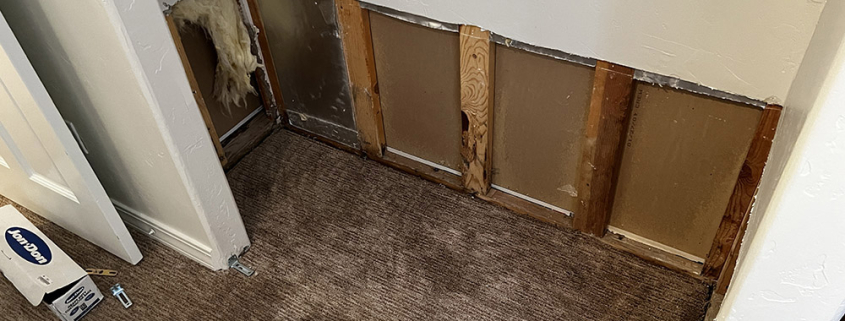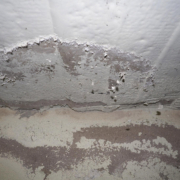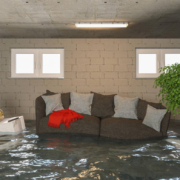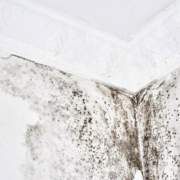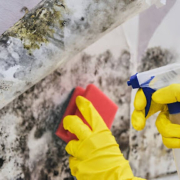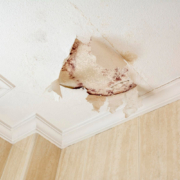Flood Damage Restoration: Tips For Cleaning Up After a Flood
Introduction
Flood damage restoration is the process of cleaning, repairing, and restoring properties that have been affected by flooding. It is important to act quickly in these situations to prevent further damage and minimize health risks. Floodwaters can contain harmful substances like bacteria, chemicals, and debris, making the area unsafe.
There are several challenges that arise when dealing with flood cleanup:
- Health Risks: Being exposed to contaminated water can result in infections and illnesses.
- Structural Damage: Flooding can weaken the foundation of buildings, leading to long-term structural problems.
- Mold Growth: The moisture left behind after a flood provides an ideal environment for mold and mildew to grow, which can be detrimental to both health and property.
- Emotional Stress: Dealing with the extensive damage caused by a flood can be emotionally overwhelming for property owners.
By understanding the complexities involved in flood damage restoration, you can better prepare yourself for an efficient cleanup process.
1. Preparing for Flood Damage Restoration
Safety Precautions
Before you start any flood restoration work, make sure you prioritize your safety with these precautions:
- Wear Protective Gear: Use rubber boots, gloves, and safety goggles to protect yourself from contaminated water and debris.
- Shut Off Utilities: Disconnect the main power supply and gas lines to avoid electrical hazards. If you’re not sure how to do it, ask an electrician for help.
- Ventilate the Area: Open windows and doors to let fresh air in and improve air circulation.
Documenting Damage for Insurance Purposes
Proper documentation is essential when filing insurance claims for flood damage. Here’s what you should do:
- Take Photos and Videos: Capture clear images of all affected areas and damaged items. Remember to document both the inside and outside of your property.
- Keep a Detailed Inventory: Make a list of all the belongings that got damaged, including furniture, appliances, and personal items. Write down their condition before and after the flood.
- Save Receipts: Hold on to receipts for any emergency repairs or purchases you made because of the flood.
Understanding Flood Insurance Coverage
To have a better understanding of your flood insurance policy, follow these steps:
- Review Your Policy: Take time to read and understand what exactly is covered under your current plan. Usually, standard home insurance doesn’t include protection against flood damage—so you might need separate flood insurance.
- Know Your Limits: Be aware of coverage limits for different types of property—building structure versus personal belongings.
- Contact Your Insurer: As soon as possible, inform your insurance provider about the damage so they can guide you through the claim process.
By taking these steps, you’ll be able to handle the initial phase of flood damage restoration more effectively. You’ll also prioritize your safety and increase your chances of receiving financial assistance through proper documentation.
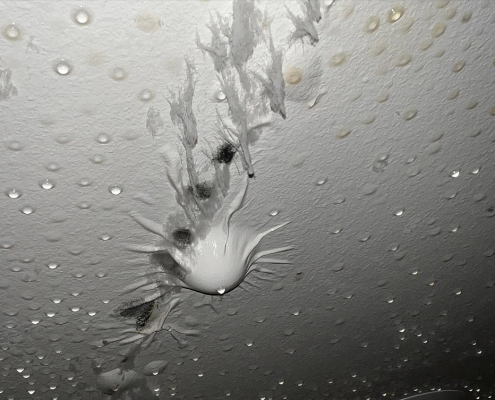
2. Steps to Take Immediately After a Flood
Assessing Building Structure Integrity
After a flood, your first priority should be ensuring the safety and stability of your building. Inspect for structural damage, such as:
- Cracks in walls, floors, or ceilings
- Warped or buckled floorboards
- Compromised support beams or foundations
If you notice significant damage, it’s crucial to contact a structural engineer or professional restoration company immediately.
Removing Standing Water
Standing water removal is essential to prevent further damage and health risks. The longer water remains, the more havoc it can wreak on your property. Effective methods for removing standing water include:
- Wet Vacuum: Ideal for smaller areas with shallow water. Ensure the vacuum is designed for wet use.
- Pump: Suitable for larger volumes of water. Submersible pumps can quickly extract water from basements or heavily flooded rooms.
Addressing Immediate Concerns
Once the water is removed, promptly address other immediate concerns like:
- Ventilating the area to reduce humidity
- Removing wet carpets and furniture to prevent mold growth
- Disposing of contaminated items safely
By taking these steps swiftly, you minimize long-term damage and lay the groundwork for thorough flood damage restoration.
3. Cleaning and Sanitizing Flooded Areas
Proper Disposal Methods for Debris and Contaminated Items
Debris removal is critical in flood damage restoration. Identify and discard any items significantly damaged by the flood, such as furniture, appliances, carpets, and other household items. For smaller items, use plastic garbage bags to contain them securely. Larger debris may require professional assistance for proper disposal. This step ensures that all contaminated items are safely removed from the property, minimizing health risks.
Removing Mud, Silt, and Other Sediment
Floodwaters often leave behind mud, silt, and other sediments that need to be manually removed. Utilize shovels and buckets to scoop up the bulk of this debris. High-pressure hoses can be effective in washing away residual silt from hard surfaces. Always wear protective gear during this process to avoid direct contact with contaminants.
The Role of Specialized Cleaning Products
Specialized cleaning products play a crucial role in sanitizing surfaces affected by floodwaters. These products are formulated to penetrate porous materials and eliminate bacteria, mold, and mildew effectively. Read labels carefully for directions on proper usage to maximize their effectiveness. Use disinfectants designed specifically for flood damage restoration to ensure thorough sanitation.
Preventing Mold and Mildew Growth
Preventing mold and mildew growth requires ongoing maintenance beyond initial cleaning. After removing debris and sanitizing surfaces, use dehumidifiers to reduce moisture levels in the affected areas. Regularly inspect your property for signs of mold or mildew and address any issues promptly with appropriate cleaning products or professional services if needed.
Maintaining a clean environment post-flood significantly reduces health risks and prevents further damage to your property.
4. Drying and Dehumidifying Strategies
Moisture control is crucial in restoring flood-damaged areas. Making sure that walls and other structural components are properly dried can prevent serious long-term damage.
Drying Walls and Structural Elements
Here are some steps to effectively dry walls and structural elements:
- Remove Wall Finishes and Insulation: Start by taking off interior wall finishes and insulation so you can access the inside of the wall.
- Use Industrial Fans: Use powerful fans to circulate air and speed up the drying process.
- Check Moisture Levels: Regularly check the moisture levels within the walls using a moisture meter to make sure they are fully dry before putting back insulation.
Dehumidification Methods
Dealing with moisture problems through dehumidification is another important step:
- Industrial Dehumidifiers: Place industrial dehumidifiers in affected areas to remove excess moisture from the air.
- Combination Techniques: Use a combination of heaters, fans, and dehumidifiers for best results.
Scrubbing and Cleaning Floors
Floors often suffer the most from flood damage. It’s crucial to clean them properly:
- Choose the Right Cleaning Products: Select cleaning products specifically made for different types of flooring; for example, use gentle detergents for wood floors.
- Scrub with Stiff-Bristled Brushes: Use brushes with stiff bristles to effectively remove dirt and contaminants.
- Dry Thoroughly: Make sure all surfaces are dried completely using air movers or other drying equipment to prevent mold growth.
These strategies help preserve the structure of your property while also preventing additional problems like mold.
5. The Role of Professionals in Flood Damage Restoration
Hiring a professional flood damage restoration service offers several advantages, especially when dealing with extensive or complex flood damage. Professionals have the expertise and equipment required to efficiently restore your property, minimizing further damage and ensuring safety.
Benefits of Hiring a Professional Restoration Company
- Expert Knowledge and Skills: Trained professionals possess the knowledge to assess the extent of damage accurately and implement the most effective restoration techniques.
- Advanced Equipment: High-grade industrial tools like dehumidifiers, air movers, and specialized cleaning agents are used to ensure thorough cleaning and drying.
- Time Efficiency: Professionals can expedite the restoration process, reducing downtime and allowing you to return to your normal routine sooner.
Signs That Indicate the Need for Immediate Professional Assistance
- Severe Structural Damage: If there are significant cracks, sagging ceilings, or compromised foundations, professional intervention is crucial.
- Persistent Standing Water: Difficulty in removing large volumes of water or continuous seepage suggests the need for expert help.
- Widespread Mold Growth: Extensive mold infestation requires specialized treatment to safely remove and prevent recurrence.
Evaluating the Overall Scope of Repairs Required
Professionals conduct a comprehensive assessment to determine:
- The extent of structural repairs needed
- Areas requiring deep cleaning and sanitization
- Necessary steps to prevent future damage
Engaging a professional flood damage restoration service ensures that all aspects of recovery are addressed systematically.
Conclusion
Taking prompt action for flood damage restoration is crucial to minimize damage and ensure personal safety. Use the provided flood damage restoration tips to start cleaning up after a flood effectively.
- Prioritize your safety and follow the outlined steps diligently.
- For extensive or complex flood damage, consider reaching out to professionals for comprehensive restoration work.
These measures will help protect your property and health, making the recovery process smoother.

